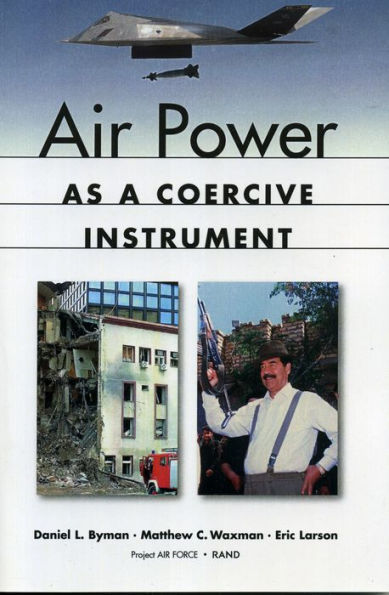5
1
9780833027436


Air Power As A Coercive Instrument / Edition 1 available in Paperback

Air Power As A Coercive Instrument / Edition 1
- ISBN-10:
- 0833027433
- ISBN-13:
- 9780833027436
- Pub. Date:
- 09/20/1999
- Publisher:
- RAND Corporation
- ISBN-10:
- 0833027433
- ISBN-13:
- 9780833027436
- Pub. Date:
- 09/20/1999
- Publisher:
- RAND Corporation

Air Power As A Coercive Instrument / Edition 1
$25.0
Current price is , Original price is $25.0. You
$25.00
This item is available online through Marketplace sellers.
$12.00
This item is available online through Marketplace sellers.
25.0
Out Of Stock

Product Details
| ISBN-13: | 9780833027436 |
|---|---|
| Publisher: | RAND Corporation |
| Publication date: | 09/20/1999 |
| Edition description: | New Edition |
| Pages: | 173 |
| Product dimensions: | 6.02(w) x 9.04(h) x 0.49(d) |
| Lexile: | 1570L (what's this?) |
About the Author
From the B&N Reads Blog

